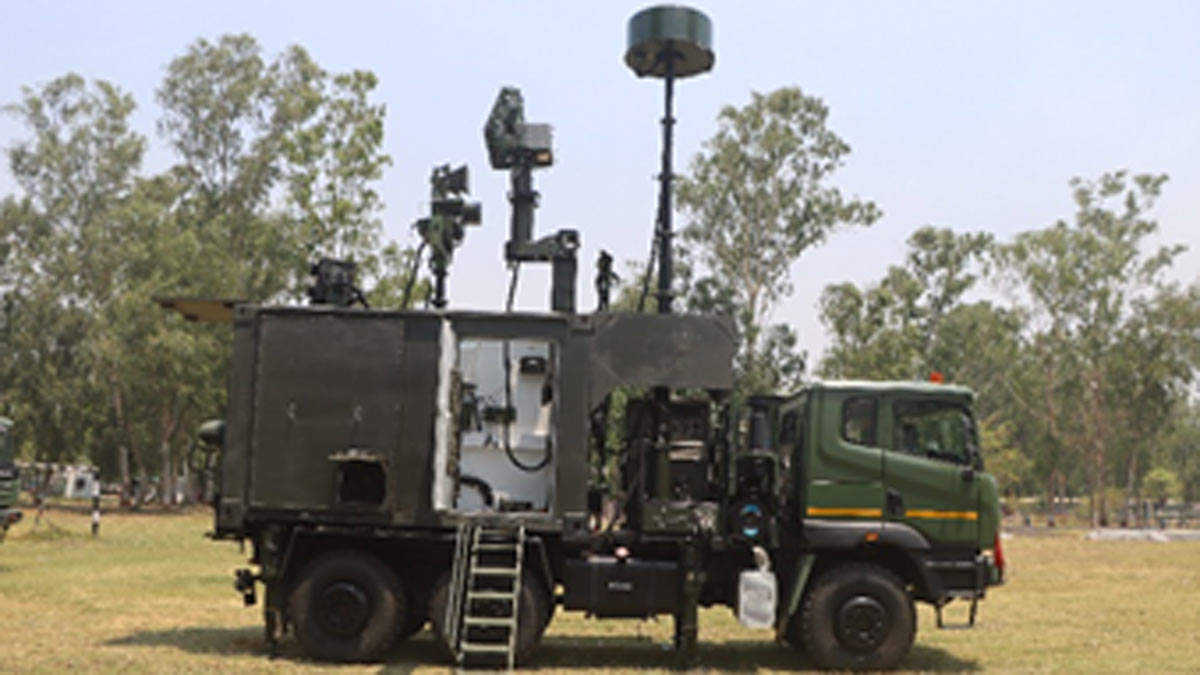India’s 'Akashteer' air defence system: An indigenous game-changer in modern warfare

India’s recent triumph in the conflict with Pakistan has showcased the prowess of its indigenous air defence system, Akashteer, marking a significant milestone in the nation’s defence capabilities. Dubbed a “clear-cut victory” by Tom Cooper, an Austrian aerial warfare analyst and historian, India’s strategic use of Akashteer, an AI-powered air defence system, neutralised threats from Chinese and Turkish drones while enabling precision missile strikes deep within Pakistani territory. This victory, achieved through homegrown technology, has reshaped South Asia’s military landscape and stunned global defence analysts.
India has put on display a nearly fully indigenous, AI solution-based autonomous coordination system, both for defence and attack. Akashteer has been developed by the Defence Research and Development Organisation (DRDO), Bharat Electronics Limited (BEL), and the Indian Space Research Organisation (ISRO), in an collaborative effort. According to a recent Press Information Bureau (PIB) report, Akashteer integrates cutting-edge technologies, including ISRO’s CARTOSAT-3 and RISAT-2 satellites, the NavIC navigation system, stealth drones, ground radars, and mobile war rooms. With a range of approximately 300 km, it provides robust air defence and strike capabilities, covering much of Pakistan. Its ability to coordinate long-range surveillance radars and surface-to-air missile systems has created an Indian equivalent of Israel’s Iron Dome, effectively neutralising diverse aerial threats.
The system’s real-time decision-making, enabled by an AI command cloud, eliminates delays caused by human intervention. During the conflict, Akashteer’s swarm drones, equipped with 5-10 kg payloads, demonstrated unparalleled stealth and agility. These drones, capable of self-reprogramming mid-flight, evaded Pakistani and Chinese radars while delivering explosives, jammers, and reconnaissance kits. A PIB report highlights Akashteer’s mobile plug-and-strike system, operable from jeep-mounted field centres, allowed India to coordinate simultaneous strikes on 11 Pakistani air bases. This operational flexibility, combined with NavIC’s superior terrain mapping, gave India a decisive edge over adversaries reliant on foreign GPS systems.
The conflict, sparked by Pakistan’s missile attacks, saw India respond with precision strikes on key Pakistani targets, including weapon storage areas in Kirana Hills, Chagai Hills, Karachi, and Kahuta. Pakistan’s radar and command-and-control systems, including US-supplied radars and AWACS, failed to detect Akashteer’s stealth drones, leading to a nationwide shutdown of its air operations. Pakistan’s Director General of Military Operations was compelled to request a ceasefire, signalling a significant military disadvantage, as noted by Cooper.
John Spencer, chair of urban warfare studies at Modern War Institute, praised Akashteer’s 100 per cent indigenous tech stack, built with Indian chips and processors, which ensured secrecy and strategic surprise. Unlike China’s weapon systems, which failed to counter Indian strikes, Akashteer’s success has prompted global reevaluation. The Pentagon ordered a review of its underestimation of India’s capabilities, while China’s defence teams are trying to counter Akashteer’s algorithms. Turkey is upgrading its drones, after being outpaced by India’s lighter, faster, and stealthier swarms.
Akashteer’s success underscores India’s rise as a global military tech innovator. As conflicts worldwide increasingly rely on drones and missiles, India’s leapfrogging of traditional powers signals a new era of sovereign capability and operational dominance. For adversaries, it spells the need to recalibrate strategies; for India, it heralds a future of technological self-reliance and regional influence.
Defence